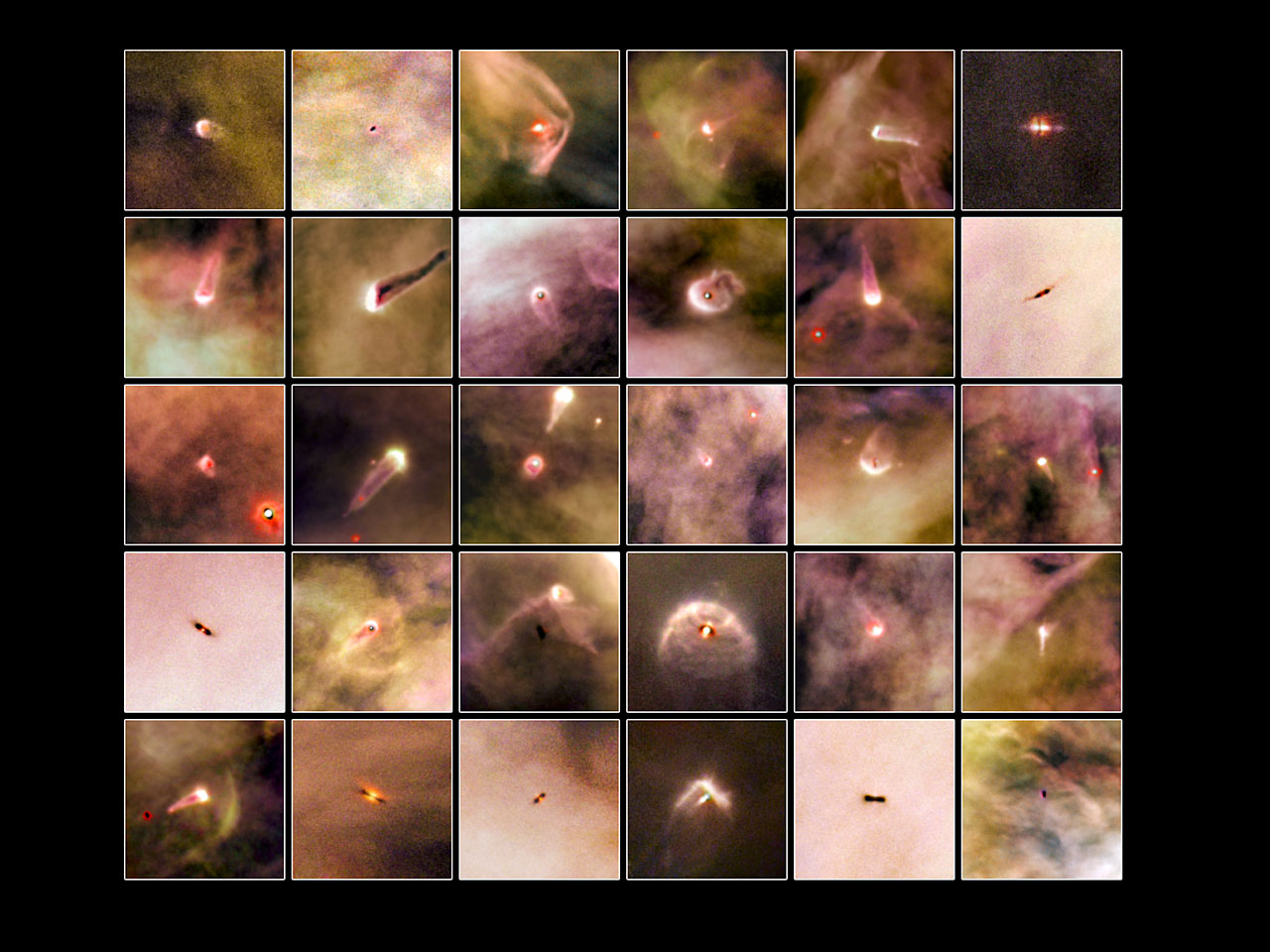Royal Astronomical Society | 2011 Aug 18
Our solar system, where planets have a range of sizes and move in near-circular paths, may be rather unusual, according to a German-British team led by Professor Pavel Kroupa of the University of Bonn. The astronomers, who publish their model in the journal Monthly Notices of the Royal Astronomical Society, find that forming planetary systems may be knocked around by crashes with nearby clumps of material, leading to systems where planets have highly inclined orbits and where the smaller (and potentially habitable) worlds are thrown out completely.
The planets in our Solar System, including the Earth, orbit in the same direction around the Sun as the Sun spins, mostly move in paths not so different from circles and are also more or less lined up into a plane not tilted very far with respect to the solar equator. But planetary systems around other stars can be very different, with some worlds moving in the opposite direction to the spin of their stars and with highly tilted orbits. For the first time the team of astronomers think they have a convincing explanation for these radically different systems.
Both the shape of and direction of travel of planets in our Solar System were thought to result entirely from the formation of the Sun and planets more than 4600 million years ago. Our local planetary system is believed to have formed as a cloud of gas and dust (a nebula) that collapsed into a rotating disk under the influence of gravity. The planets then grew from clumps of material within this so-called protoplanetary disk.
The new work suggests that oddly shaped orbits may result from a rather less smooth process. The team think that if the protoplanetary disk enters another cloud of material, it can draw off up to about 30 times the mass of Jupiter from the cloud. Adding this extra gas and dust tilts the disk and hence the angle of the final orbits. Most planetary systems are thought to form in clusters of stars, where the member stars are fairly close together, so these encounters may be very common.
Team member Dr Ingo Thies, also of the University of Bonn, has carried out computer simulations to test the new idea. He finds that as well as tilting over, loading the protoplanetary disk with material can even reverse its spin, so that it turns in a 'retrograde' sense, where it rotates in the opposite sense to its parent star. At the same time, the encounter compresses the inner region of the disk, possibly speeding up the planetary formation process.
In those circumstances, the simulation suggests that any planets that form will then be in highly inclined or even retrograde orbits. In some cases the orbits may even be tilted with respect to each other, leading to a highly unstable system. One by one, the least massive planets will be ejected completely, leaving behind a small number of 'hot Jupiters', massive worlds that move in orbits extremely close to their star.
In less extreme cases, the disk may only collect a small amount of additional gas and dust and change its tilt by a small amount. This may be what happened in our own Solar System, where the weighted average tilt of planetary orbits to the Sun's equator is about 7 degrees.
Dr Thies believes the Sun and planets are amongst the more orderly systems. "Like most stars, the Sun formed in a cluster, so probably did encounter another cloud of gas and dust soon after it formed. Fortunately for us, this was a gentle collision, so the effect on the disk that eventually became the planets was relatively benign. If things had been different, an unstable planetary system may have formed around the Sun, the Earth might have been ejected from the Solar System and none of us would be here to talk about it."
Professor Kroupa sees the model as a big step forward. "We may be on the cusp of solving the mystery of why some planetary systems are tilted so much and lack places where life could thrive. The model helps to explain why our Solar System looks the way it does, with the Earth in a stable orbit and larger planets further out. Our work should help other scientists refine their search for life elsewhere in the Universe."
Planet Formation Illustrated - A set of 23 images illustrating the new concept.
A natural formation scenario for misaligned and short-period eccentric extrasolar planets - Ingo Thies et al
- arXiv.org > astro-ph > arXiv:1107.2113 > 11 Jul 2011
Cosmic Collisions Could Eject Habitable Planets
Universe Today | Tammy Plotner | 2011 Aug 19
Cosmic Crashes May Give Habitable Planets the Boot
Space.com | 2011 Aug 19
